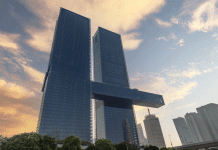Ruth Skidmore, social impact lead at Meeting Place, discusses the importance of social value and the potential it can deliver for communities across the UK
Estimates suggest more than £1bn of social impact was generated from UK construction projects last year, a significant contribution and growing trend across the built environment of organisations making a positive impact on society.
A much-commented on topic within the industry, social impact has the potential to deliver widespread impact on communities across the UK. However, it is also often misunderstood, with the industry struggling to measure, understand, and communicate the tangible benefits it delivers.
One of the companies leading the conversation and dispelling these misconceptions is Meeting Place, which operates nationally. The specialist built environment PR agency’s core ethos is to use the built environment as a force for good.
What is social impact?
Social impact can be viewed as the benefits created through building developments. This can range from economic benefits, such as providing jobs through incorporating shops, to cultural benefits, such as building community centers, or environmental benefits, including expansive green space and tree cover.
The country’s current practices are not sustainable, and our insatiable progress is also causing us to overconsume and destroy the planet.
The built environment holds such potential power and opportunity – good and bad. Addressed correctly, we can use this to push for change and reap the benefits of sustainable development.
Social impact aims to make the development process more democratic, giving residents a voice and listening to their needs. For example, if a community needs nursery or school spaces, this could be included in a building site proposal.
We can empower people by giving them agency to adapt their spaces and their neighborhoods, giving spaces longevity as they respond to community needs.
Measuring social impact
The value of social impact is far-reaching, but it can be tangibly measured. Meeting Place has a measurement toolkit that can be used for all stages of the design process. We can set ambitious goals and track them in real time, maximising social impacts and accurately measuring the values.
However, I’m keen that we don’t get too stuck in the metrics. These figures benefit our clients and local authorities; however, we must remain focused on the communities we are helping rather than being bogged down in the numbers.
A key component of social impact is community engagement – gauging the needs of the communities in development is being built; varying methods must be used to consult them. Our greatest opportunity to learn from a community comes when we speak with organizations that understand the experiences of local individuals.

These encounters allow us to talk openly and honestly about concerns, ideas, and recommendations. Through this methodology, residents get more ownership of developments, which can help to continue its legacy as it responds to their concerns.
An example of this in practice is the work we delivered with Place for People on its Dove Lane site in Bristol. Instead of remaining unused while waiting for development to start, we explored how to maximise impact through “meanwhile use”.
This ranged from a residency for the circus on the land to use by St Paul’s Carnival – acting as an example of how developers can contribute towards creating community spaces before development.
Changing the narrative
Although the industry was an early adopter of the concept of social impact, it is still very much in its infancy. As a result, there are a few hesitancies, specifically related to concerns around increased costs of monitoring social impact. However, I think this is a misconception, and I want to help change the narrative.
In economic terms, we can demonstrate a tangible return on investment through evaluating social impact interventions. We see savings such as reduced trips to the GP and increased local spending due to people spending more time at their homes as they feel less lonely – these all come under the banner of social impact.
It can also be achieved through engagement and the creation of community facilities in development. A lack of community support can often result in an inability to tackle problems, which has a negative social impact.
Looking at the industry’s future, a desire for transparency is evident; people don’t want to be lied to, and developers can’t overpromise anymore.
That’s why I want to make a pact on social impact. Over the next few years, we will see greater integrity demanded by local communities. We will see greater ownership from local people and a real desire to see activities preserved for future generations, and it’s something the industry should fully embrace.
Ruth Skidmore
Social impact lead
Meeting Place
Tel: +44 (0)117 428 6873

















